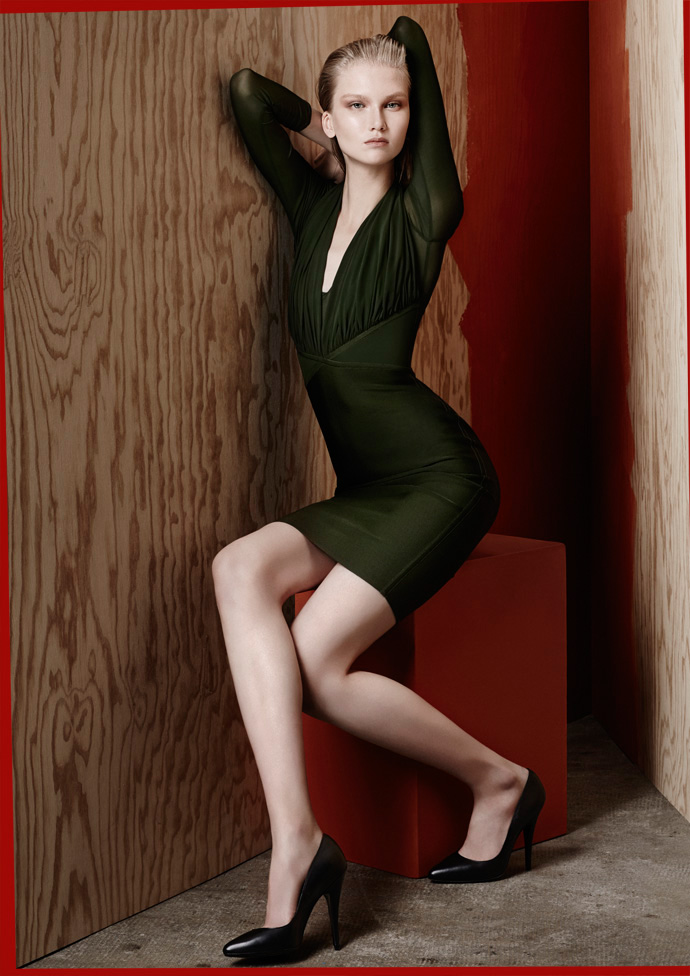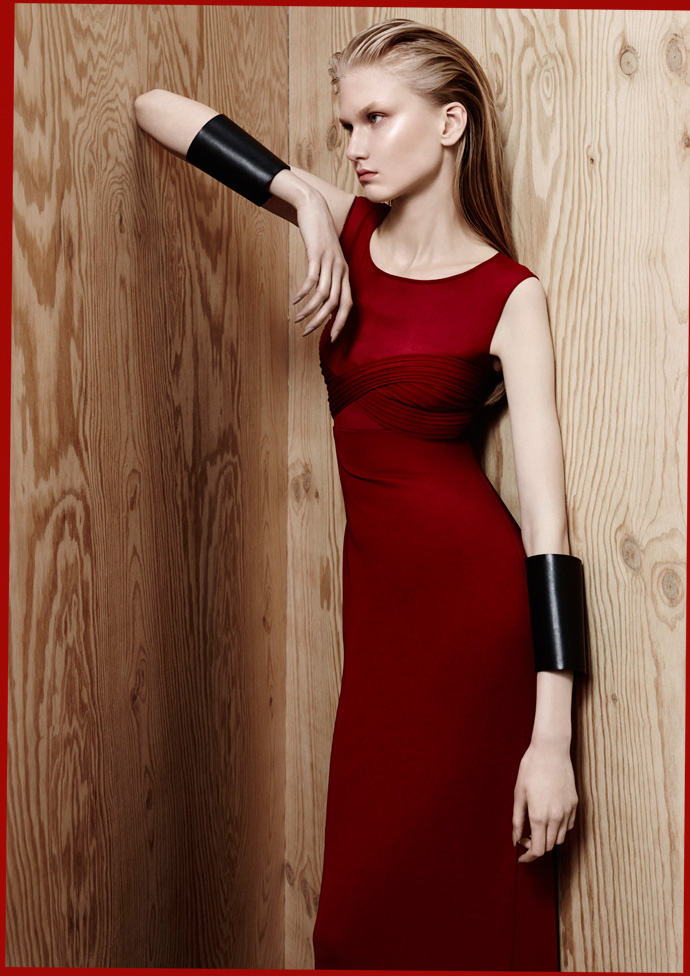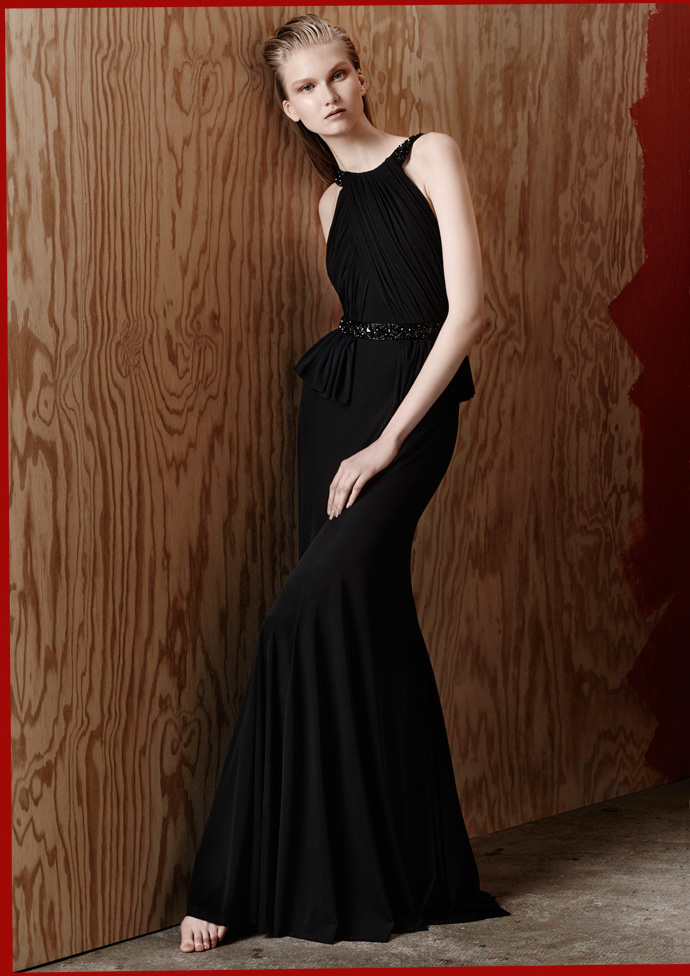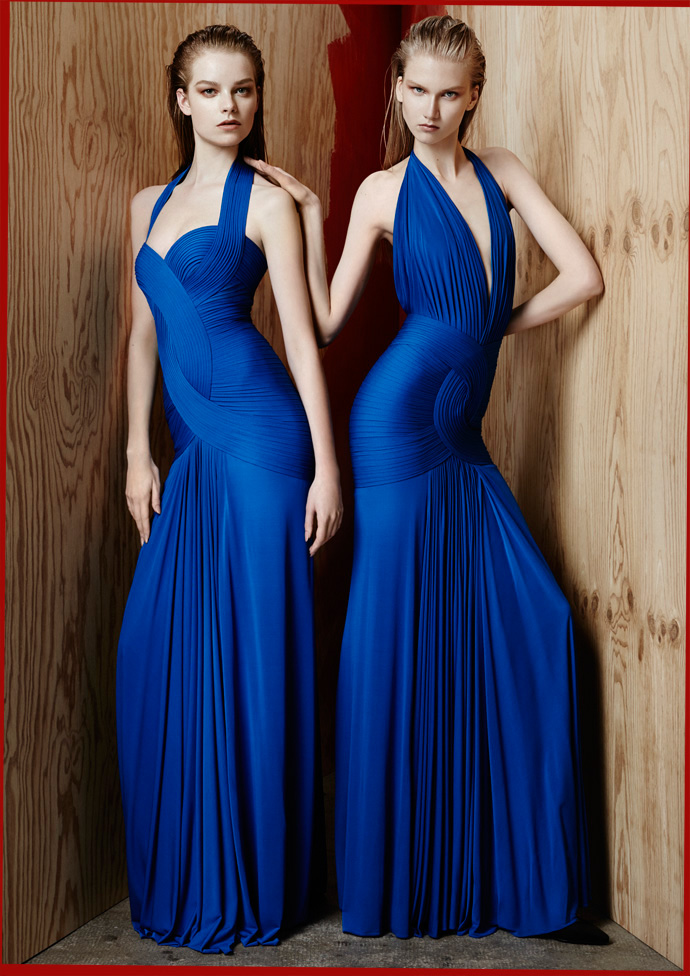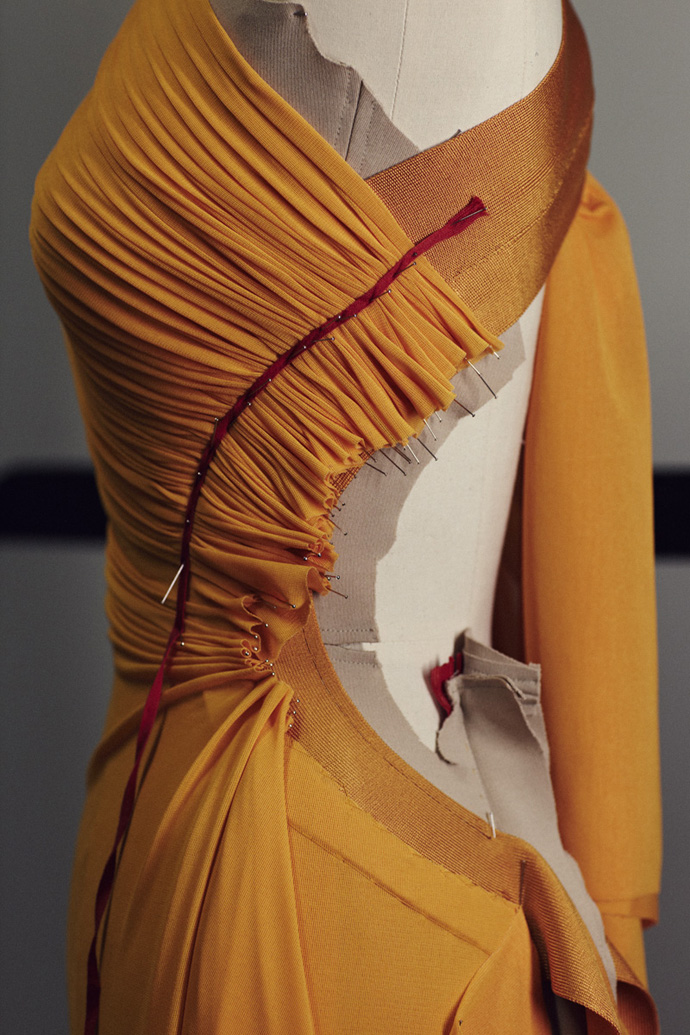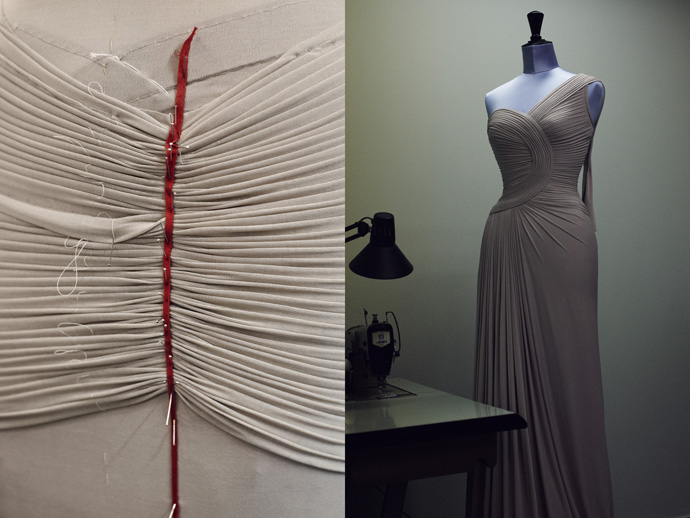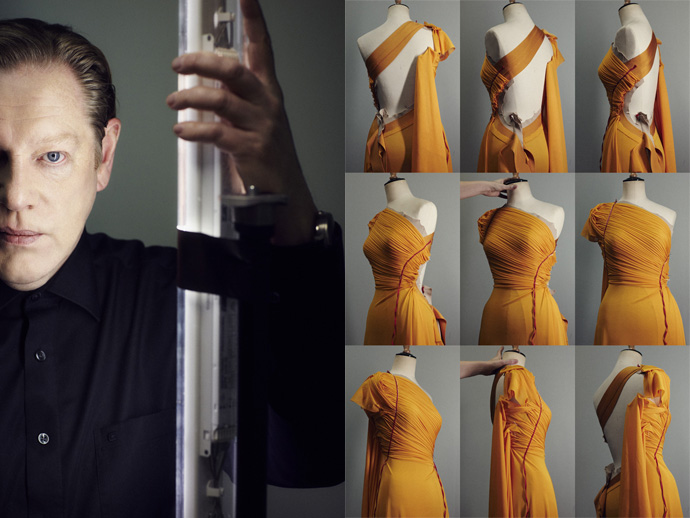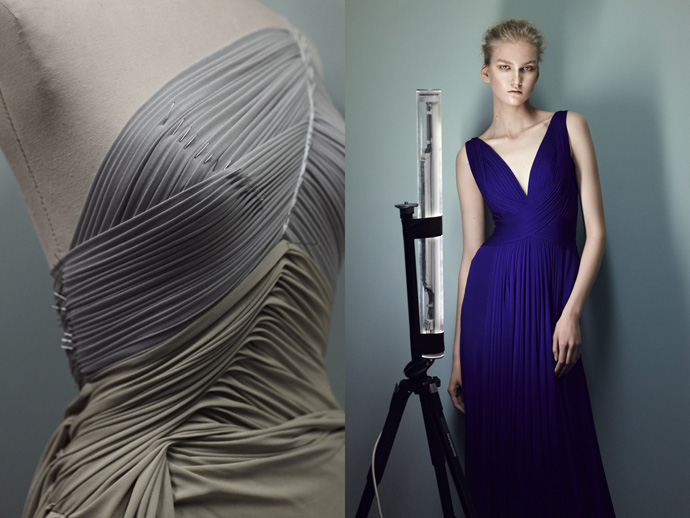-

Kostas Murkudis
-Putting Kostas Murkudis, with his East German utilitarian approach, at the helm of Closed jeans, a brand defined by the relationship between function and form, is a match in heaven, in a time where the initial idea of fashion is caught between mass production and the arbitrary grip of luxury-obsessed conglomerates.
They each bring their own interesting history and their associations to big names to a collaboration very much anchored in the “now” – on one side, Marithé and François Girbaud, who founded Closed in the 70’s, and on the other, Helmut Lang, with whom Murkudis worked during the label’s early and formative years, though both brand and designer exist in their own right.
For women’s fashion week in September, Closed will open its first flagship store in Paris.
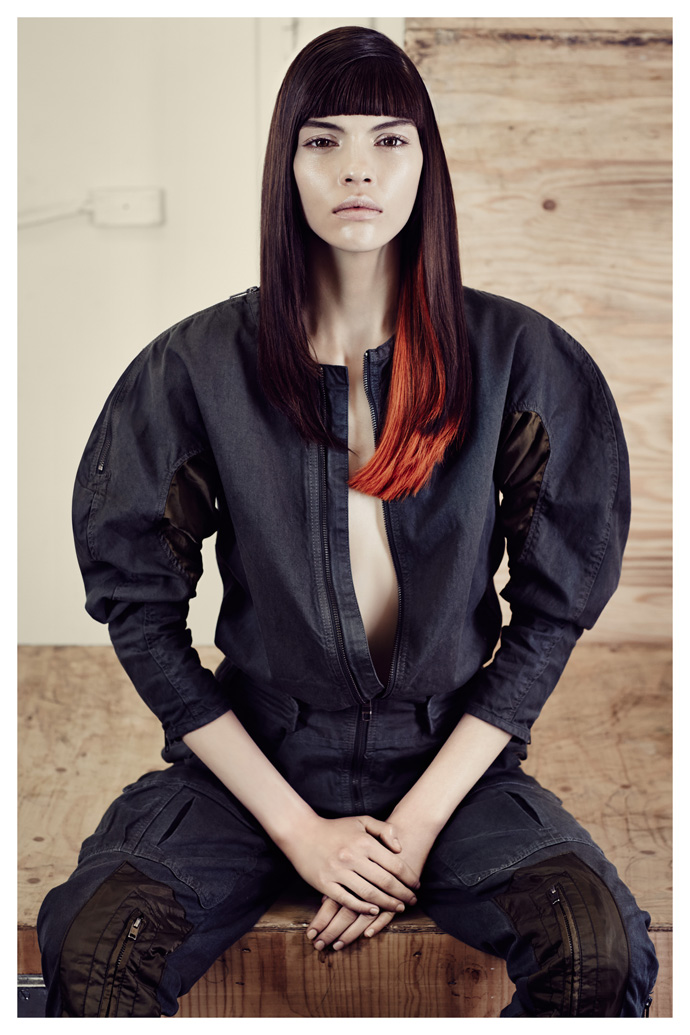
Overall "Illusion" from the FW 13/14 collection by Kostas Murkudis for Closed Jeans. Photography by René Habermacher
René Habermacher: When I heard you’d be working for Closed jeans, I thought it made great sense with your approach – sustainability, resistance, utilitarianism and uniformity are expressions that come to mind when thinking of your work, and all of these seem to be relevant in the context of jeanswear.
KM: I grew up in the DDR (German Democratic Republic), in East Germany, so these are surely aspects of my work that I value and are part of my professional ethos that I will follow up into the future. It’s my contribution, to make it accessible to more people than for example with my own brand.
I always had “two hearts beating in my chest”: one more poetic, free of necessities, and the other that is more about durability and functionality everyday. I always loved the approach of the Bauhaus, it is very important to me. But I really do love both aspects. Now with my new mission at Closed, I can really apply everything you described, I have all tools and a fantastic team I love working with.
For me this is the perfect balance between the two brands.Whereas with my own brand, my mini-label that I call my laboratory, I don’t have to think about whether the piece is really durable, has the right pocket or whatever. I just can do projects important to me, which do not necessarily have anything to do with fashion. For example recently I have worked with a royal glass manufactory in Munich, Lobmeyr, that usually do stuff like church windows etc. I think there are so many possibilities and I am very curious for new challenges.
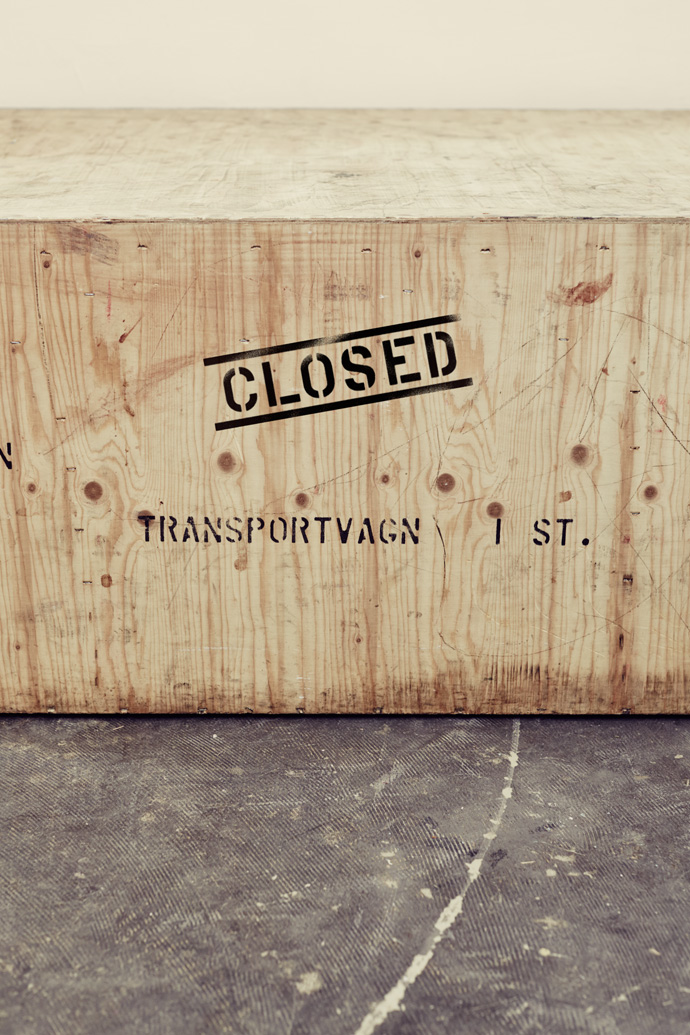
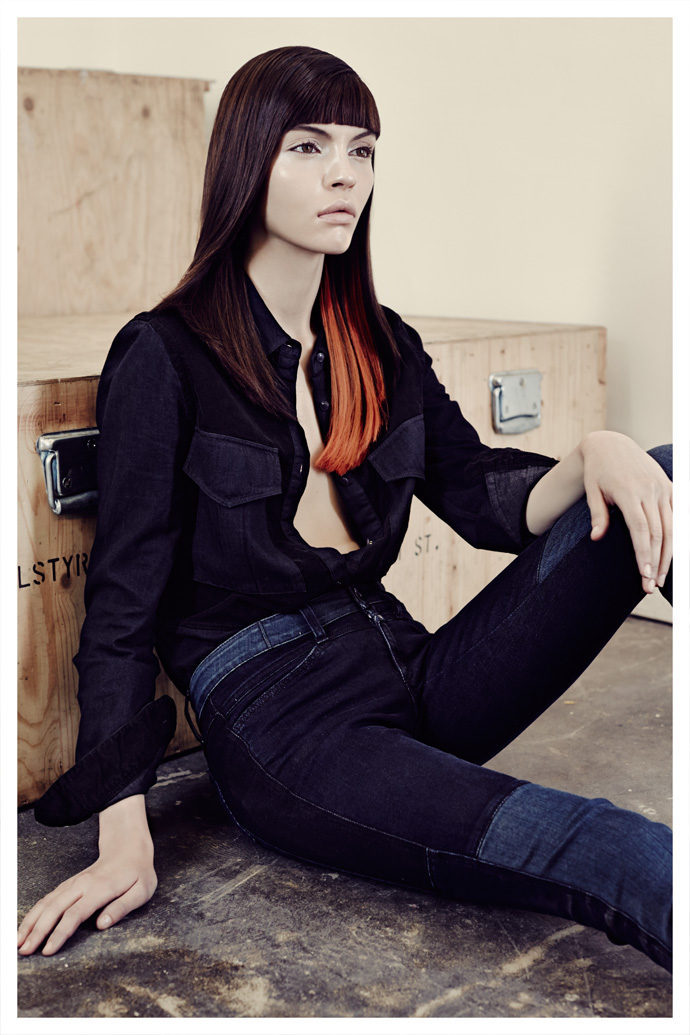
Shirt and Jeans FW 13/14 Kostas Murkudis for Closed. Photography by René Habermacher
RH: You’re working for quite some time in fashion now. When you started, fashion was something different: in the 90’s, fashion still had a socio-cultural context, was a compass and expressive part of movements. Today it’s different, its not really that a social movement expresses anything through dressing codes.
KM: That’s true and has obviously social, socio-political, and sociological causes. There is very little happening that could tempt for re-orientation. I do really hope that finally something will be happening. Or has it started already? When you look what is going on in Brasil, or Turkey, in countries where I would not have expected that this kind of movement would be surfacing.
The situations in Greece, Portugal or Spain, France and possibly soon England, don’t look so great either, but something is happening and I am hoping very much that this will spread across cultures and regions, and maybe create the necessity to develop new codes. Obviously they have to develop themselves, we as designers can’t help it.
RH: For quite a while fashion hasn’t had a cultural value of progress, it has become more a simple “garment industry.”
KM: That’s right. Fashion is not allowed to be like this anymore. It’s the very capitalist approach to define success only through growth, to which the big houses are forced to: generating work, circulate money, this and that – it’s not about content at all. In fact it is even arbitrary who designs. It is the brand with its margin that is in focus.
If that’s what’s thriving in society, fashion can only be its image.On the other hand, design has become another aspect – let’s take an example like the iPod, or the iPhone and what has been generated here: a simplicity, practicability and a beauty of objects that have not been produced like this in a while.
It’s not about developing funky variants and decorations, but to work continuously on refinement and improvement with every generation, which I believe impacts our everyday culture. Even kids are not seduced to just buy something new because there are some new crazy buttons added. And you don’t have the desire to buy a jeans with 25 embroideries and absurd stitchings on the butt that are completely pointless. This pointlessness, this battle of material is not working anymore.
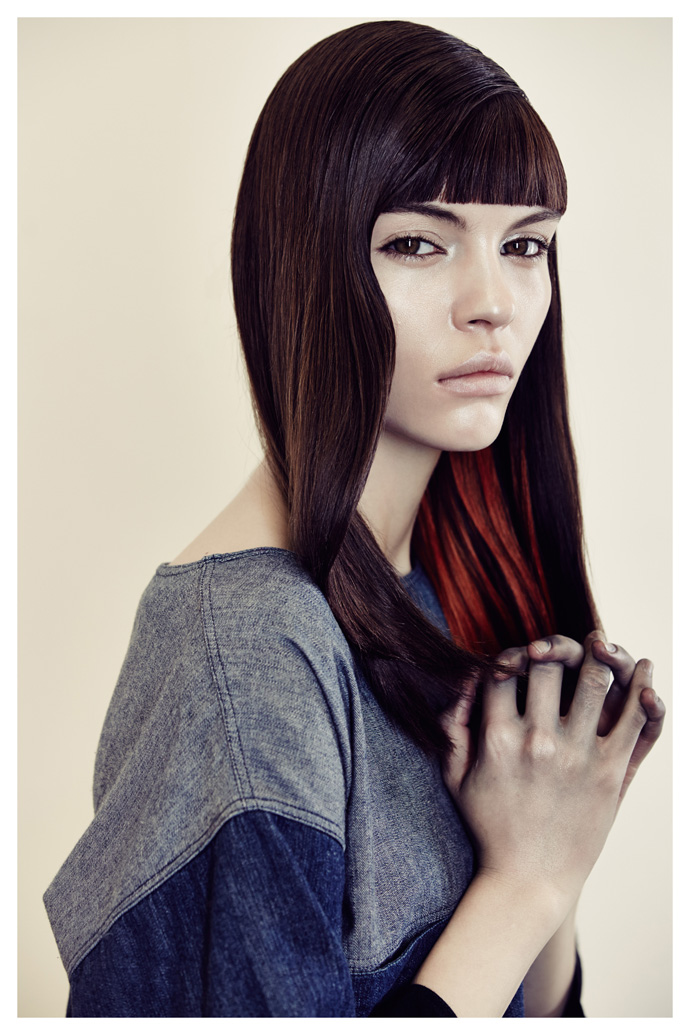
Jeans dress FW 13/14 Kostas Murkudis for Closed. Photography by René Habermacher „First there is nothing, then a deep void and finally a blue depth.“
Yves Klein.(Leitmotif for the colour codes to the SKYWALK CAPSULE COLLECTION No.1)
For example my brother Andreas, who owns a concept store in Berlin, he affords himself the luxury to buy only what he thinks is really good, regardless of the label. He buys what is up-to-date in his eyes. He was totally shocked about the pricing for which it’s possible to get good design that is on top politically correct produced in Italy: good quality fondly fabricated from great fabric. Not that this is world changing…
RH: But democratic?
KM: Democratic in a positive way. I didn’t really want to use that word. When my brother saw the Skywalk Capsule Collection in Berlin, he went to order straight away several looks from the FW collection, saying: “wow, this is really cheap- and so cool, but really cheap”.
Of course we have the same approach, maybe also because we grew up in the DDR: for us longevity or functionality and beauty don’t have to cancel each other out.RH: What is your relationship to glamour?
KM: I try to stay remote, but sometimes have to make compromises. My relationship is rather an aversion. I come from a very simple background and it really does not touch me to hear “who was where with who wearing what”, that doesn’t interest me.
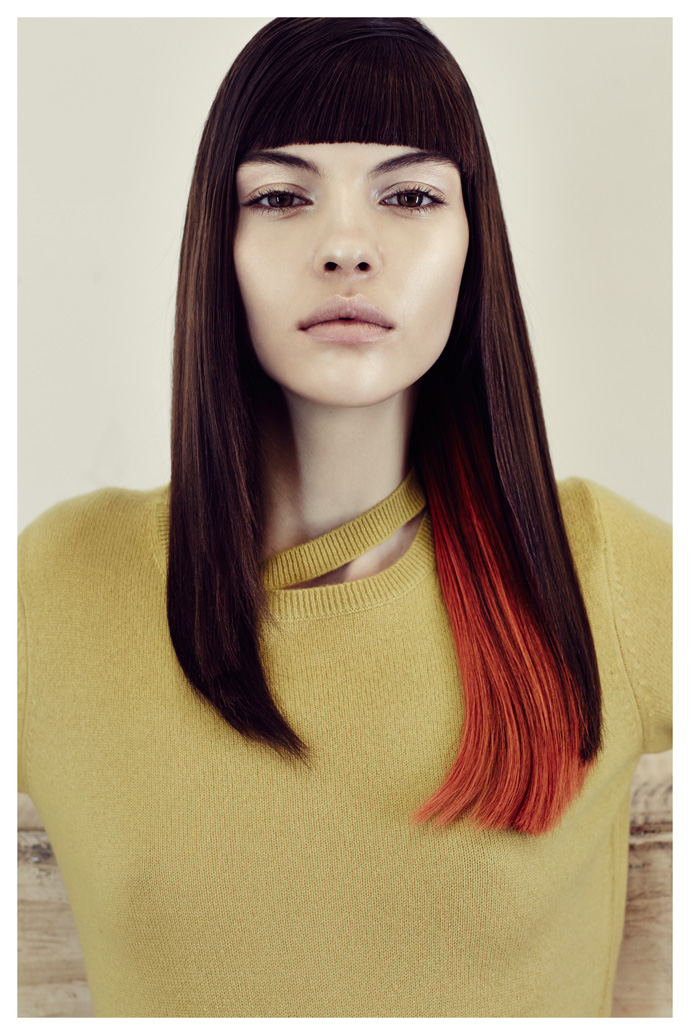
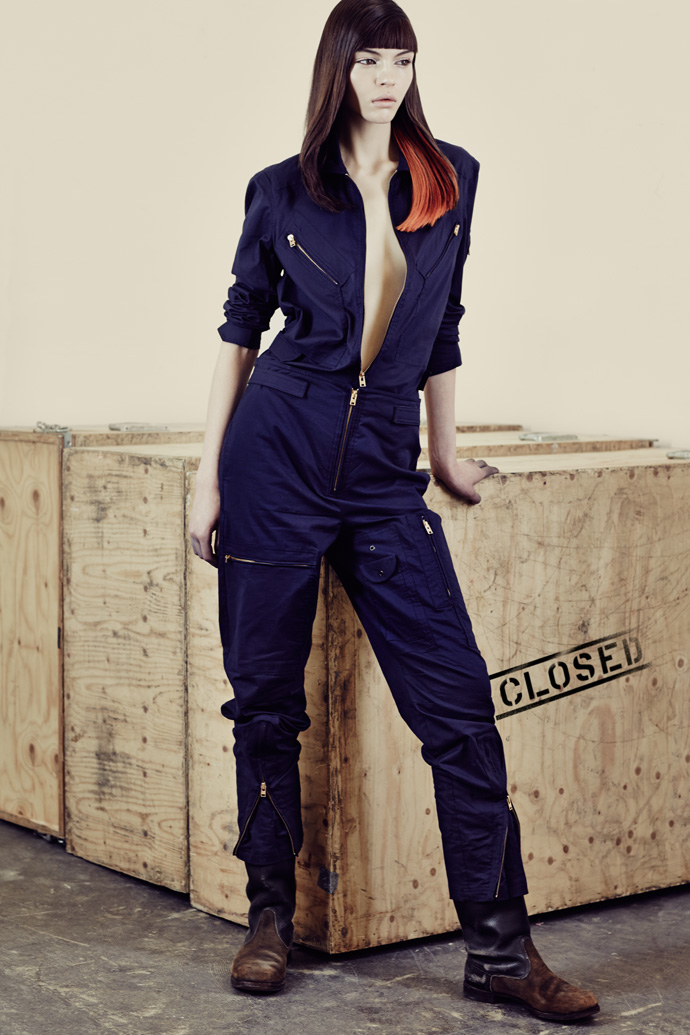
Right Side two pieces from the SKYWALK CAPSULE COLLECTION: Murkudis took inspiration from a vintage aviator suit, using the cuts and details to create a minimal wardrobe: a shirt, a blouson and pants for men and women. Boots: vintage DDR army. Photography by René Habermacher
„Earth is a delicate shade of blue“
Yuri Gagarin (Leitmotif for the colour codes to the SKYWALK CAPSULE COLLECTION No.1)
RH: Tell me a little more about the Skywalk Capsule Collection…
KM: The idea was based on the desire to bring the brand back to an international level, and the one of the brands defining aspects: the idea of unisex, that I thought very interesting and gave me also the possibility to explore menswear more, find a different angle and define their image more sharply.
Because the project was a very small range, I had to stay quite precise as well in material as colour and design, but it was the first time that I had the chance to show pieces that one actually can afford. If you look at the product, it appears at first sight quite minimal, even though its technology is actually very complex, which is something I wanted to put forward as well.
But because of all this, it was quite obvious to me to give the collection somewhat of a poetic moment.
RH: Yet here is also a practical thought behind it?
KM: Of course. It was to show the brand’s core, and a product that should function in the everyday life over long time.
Apart from that, the beauty of a product becomes apparent in its use, becomes part of our lives and our bodies. That’s what makes a jeans. It only becomes your jeans, and a great one, when it deforms on your own body, through use, through touch, through creases, through whatever. It becomes part of your being. That makes it truly beautiful when it is beautiful.
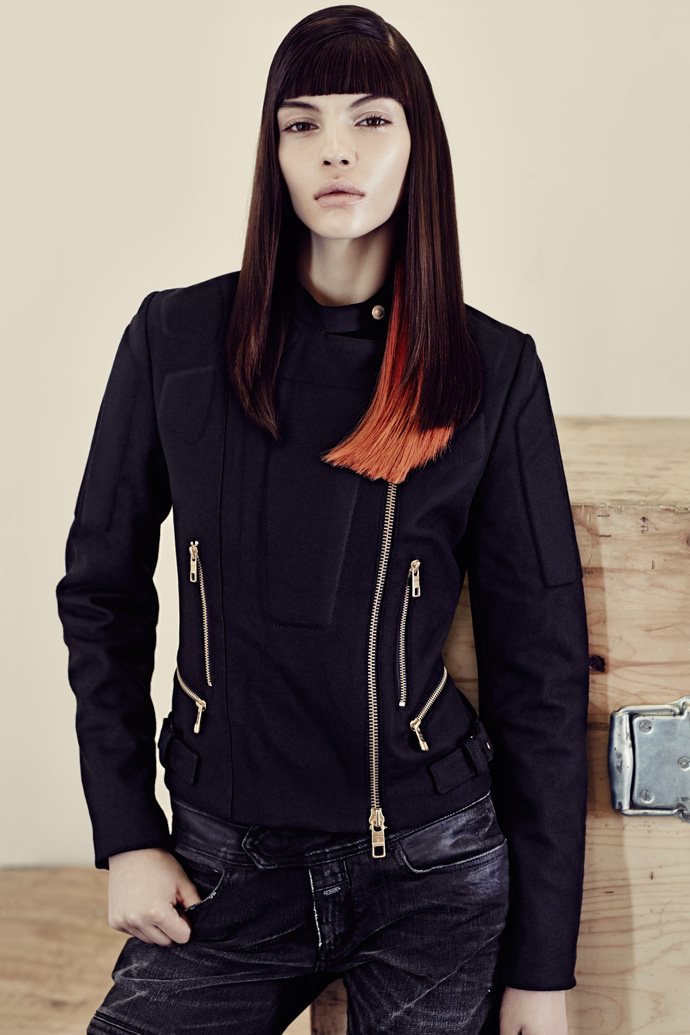
Felt Perfecto Jacket and Jeans, both FW 13/14 Costas Murkudis for Closed. Photography by René Habermacher
RH: With a clientele living in the most various meteorological conditions, does it really make sense today to produce season-oriented collections?
KM: This is a totally legitimate question. Also as we know that the big producers often deliver new products up to twelve times a year.
So for smaller brands it is indeed worth considering to orient themselves differently because they have no chance to stand up against this moloch of an industry.In a way we are overtaking ourselves with everything: when the sales start the season hasn’t even really begun, there is a resort collection, a pre-collection and a in-between collection- that is all a bit absurd. I see that with my brother, who says “I don’t need a pre-collection that is delivered in November when its perhaps snowing here and -30 celsius”. That makes no sense.
On the other side I am bound to the cycles of the classic way of producing 4 collections a year.
I think the problematics are there for everyone, but no one has yet found an ultimate solution, or takes the risk to say ‘I am going to position myself entirely new in this context.’RH: In your case do you do a presentation, or are you considering eventually a show?
KM: Right now this is not a real topic for us. Maybe next year or after that, it really depends on how we develop and what our expansion will bring.
RH: The one thing I find puzzling is with all the coverage on the shows, once the products are in the shops, you are already bored of them.
KM: I totally agree with you that three weeks after the shows you vaguely remember and when the products are delivered to the shops you practically forgot about it all. This wish and desire to own the pieces immediately is fading in that period.
But that’s what you have Zara for: they deliver within three weeks after the show a dampened version for those who can’t wait at all and never really got it anyway: those will buy the cheap copy (laughs).
By then the others just saw the newest collections and are wondering that they have ever liked the current one…. I look at this smiling.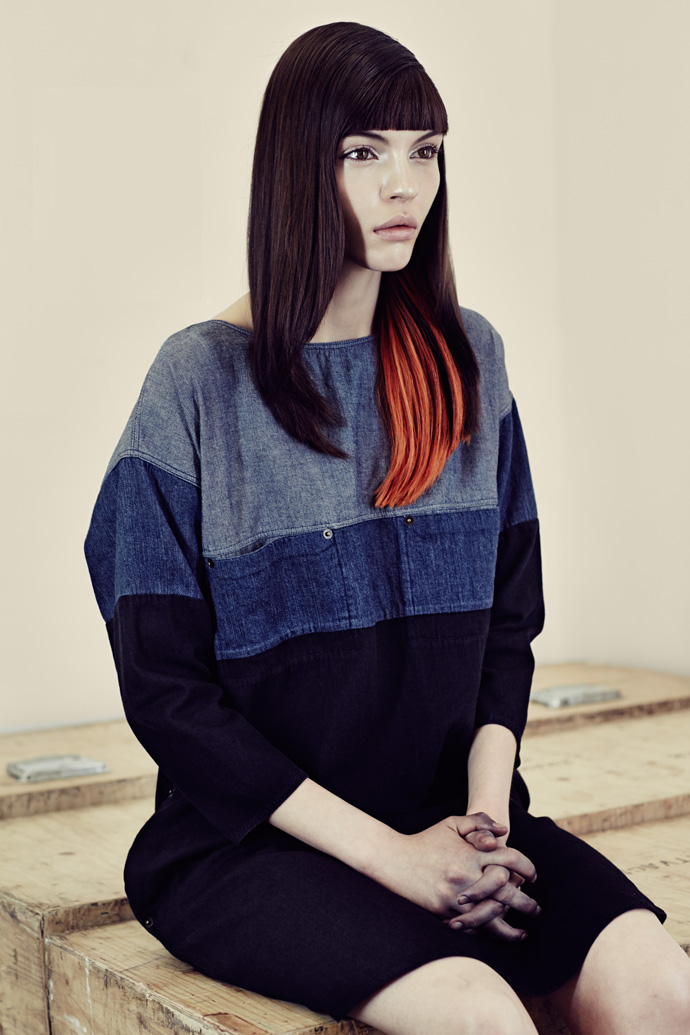
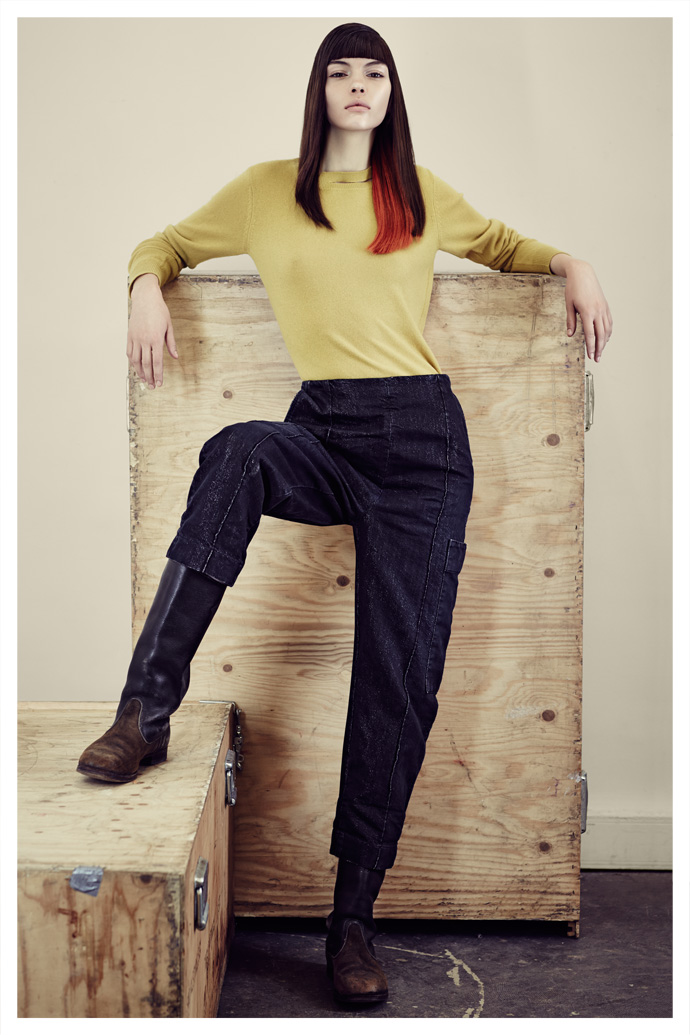
Left: Jeans dress, Right: Split neck pullover and Jeans, all FW 13/14 Kostas Murkudis for Closed. Boots: vintage DDR army. Photography by René Habermacher
RH: You do have a special relationship with Japan, is that right?
KM: Yes, when I was a small kid, I started to do judo. I had a fantastic teacher that I absolutely worshipped as a living hero.
I was excited to wear these suits, the belts. The scent of the mats, the bows, this outlandish language had fascinated me. To me it was of course an escape from my Greek moulded DDR prosaicness and the pressure to perform. I did virtually absorb all these words, ceremonies and preserve within for years.When I started to be interested in the arts I read a biography of Yves Klein, and realised he was a judo master like me, and eventually lived in Japan. I think his work was to some degree influenced by Japanese moments, in their simplicity and splendidness. This has really accompanied me ever since. The Bauhaus would have been unthinkable without the Japanese influence. In many aspects this influence has developed with me, the desire towards the exotic but as well the austere, the sophistication and the celebrated. The handling of colours, surface but also the poetic moments and the spiritual aspects behind.
I celebrated plenty successes in Japan and grew with these, so I owe a lot to the Japanese. We found each other. I was always fascinated and excited about it, to the point that Gordon, one of the owners of Closed, and I started to take Japanese lessons.
This hunger is not satisfied yet- and will always find itself in my work again.
RH: What is the last thing that stimulated you?
KM: I was very inspired by the exhibition of Martin Kippenberger: the incredible freedom of a man in dealing with the most different tools. I have great respect for his state of mind that moved me to tears of joy. I haven’t laughed that much for a while. All my senses had been spurred through this.
This interview and photographs are a Stimuleye exclusive
interview and photography RENÉ HABERMACHER
fashion editor SUZANNE VON AICHINGER
hair JONATHAN GEIMON @ AIRPORT AGENCY using Bumble and Bumble
make up MIN KIM @ AIRPORT AGENCY
model KATE B @ NEXT MODELS
thank you VERSAE VANNI @ NEXT PARIS
and LIBRAIRIE Ofr PARIS for your support00 -

monsieur hervé: ready to wear campaign
-“The story of the bandage dress is important as a fact my work storyline.”
– Hervé Leroux, AKA Monsieur Hervé LégerFor his first campaign, for the Fall/Winter 2013-14, Hervé Leroux chose to collaborate with The Stimuleye for creative direction: photographer René Habermacher in tandem with stylist and fashion muse Suzanne von Aichinger, bringing forward the modernity in Hervé’s timeless designs.
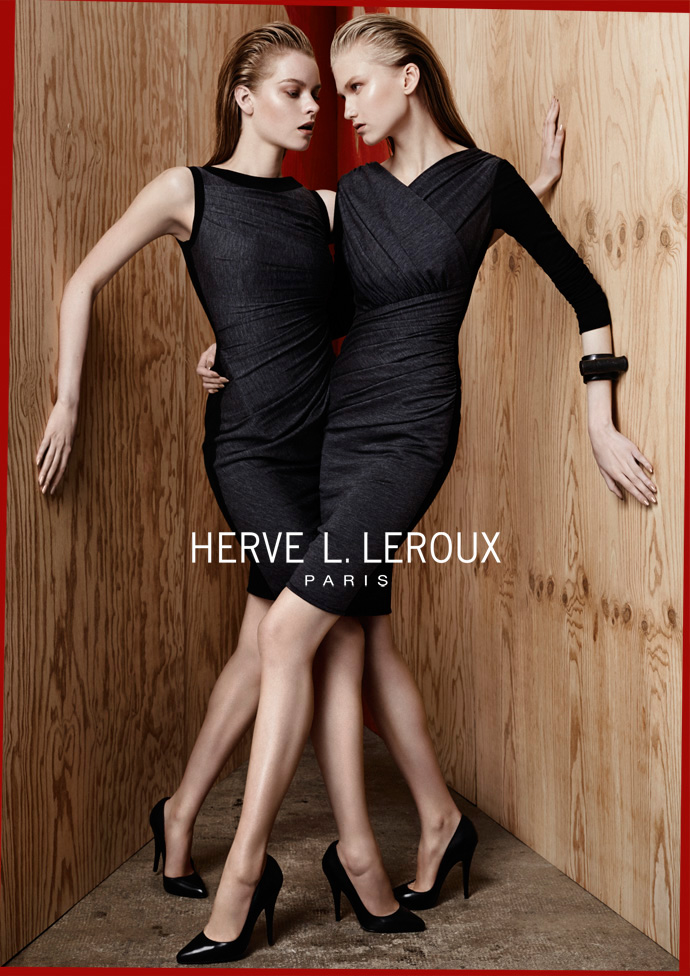 Gwen Loos and Anna Martynova intertwined in slate and black draped front dresses by Hervé Leroux FW2013.
Photography by René Habermacher
Gwen Loos and Anna Martynova intertwined in slate and black draped front dresses by Hervé Leroux FW2013.
Photography by René HabermacherAs you’ve read during our interview and couture atelier visit, Hervé Leroux, born Hervé Léger, is known for his talent for creating garments using traditional tailoring techniques while taking full advantage of developments in silhouette contraction-embracing modern fabrics.
Monsieur Hervé worked as a hairstylist and a milliner before Karl Lagerfeld offered him a collaboration with Fendi, and then Chanel, as a senior assistant. Soon after opening its doors in 1985, Maison Hervé Léger became internationally famous for pioneering the bandage dresses that were about techniques of reforming the body, focusing on the three key words for femininity: curves, waist and form. The “recipe for the 90’s”, as Suzy Menkes once wrote in the Herald Tribune, was about curve-cleaving elastic bandages and a high-octane technique that defied tradition, an effect which Hervé achieved by molding his fabric to the female form instead of draping and cutting it.
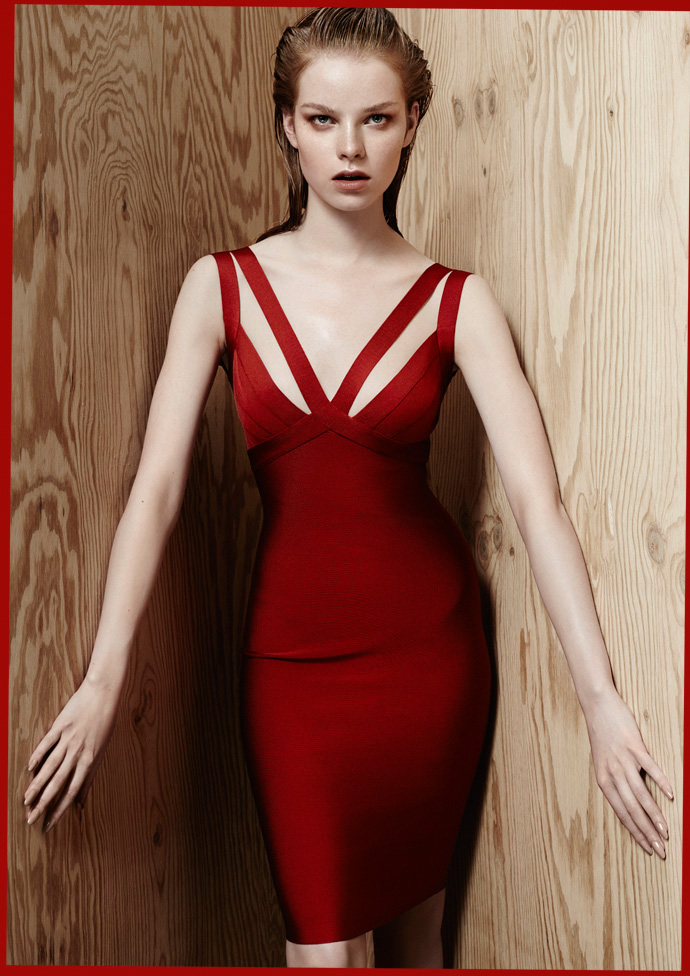
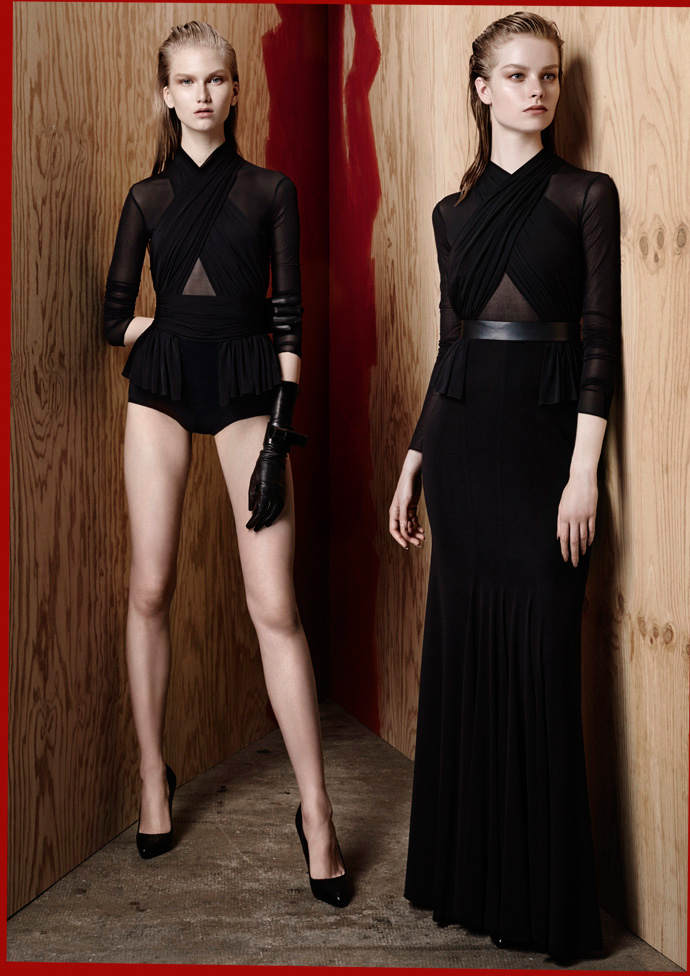 Left side: Gwen wearing a ruby deep double V-neck viscose dress recalling Hervé's iconic bandage dresses.
Right side: criss cross draped black silk jersey pieces. Photos by René Habermacher
Left side: Gwen wearing a ruby deep double V-neck viscose dress recalling Hervé's iconic bandage dresses.
Right side: criss cross draped black silk jersey pieces. Photos by René HabermacherAfter separating from the company which bears his name and adopting the name Hervé Leroux, as suggested by Karl Lagerfeld, Monsieur Hervé recalibrated his vision of glamour, towards a modern sensuality crafted by the hands of a real artisan. Every piece of both the Ready-To-Wear and the Haute Couture collections is created by Hervé’s own hands in his new atelier on 32 rue Jacob.
The Hervé Leroux Fall/Winter 2013-2014 Ready-To-Wear collection is about sober, soaring elegance, reflected on 50 hand-made pieces. For Monsieur Hervé, it is crucial that each piece be as specific and precise as a painting by Pierre Soulages, an important influence on the designer.
“It’s in doing that I can find what I am looking for.”
– Pierre SoulagesThe cut is soft, sensually embracing the female curves, revealing the secrets of the master for both of his obsessions. The fabric is draped only to create luxurious body landscapes on his monochrome canvases, paying homage to the morphology of the body.
Hervé creates a collection that can be referred to as a “second skin” – a fluid, easy-to-move silhouette, which slides on the body, becoming at once feminine and powerful.
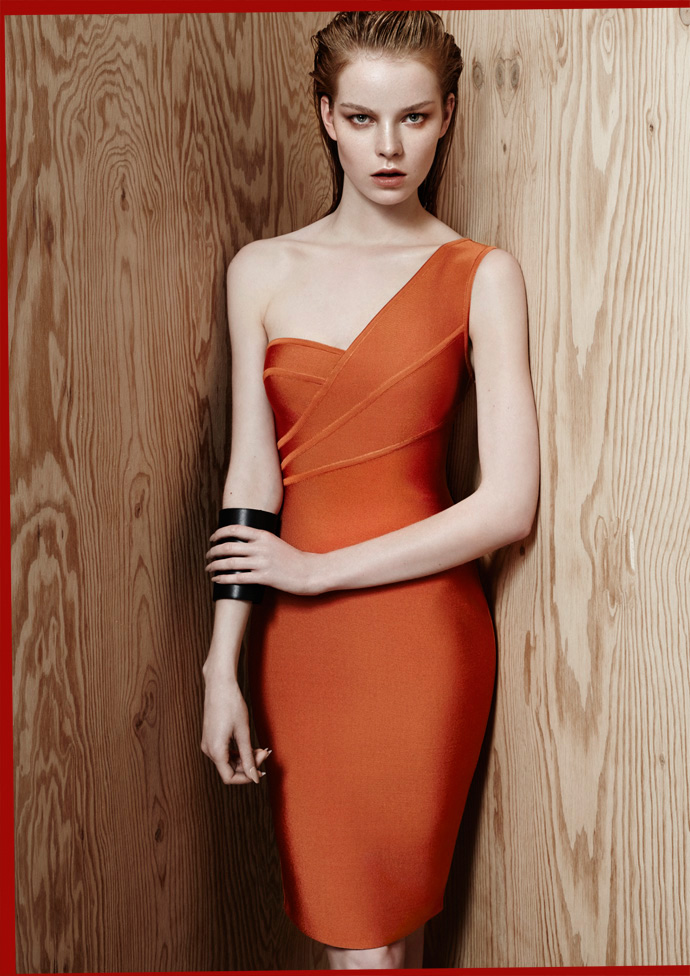 Gwen sports a Pumpkin viscose aerodynamic dress. Photo by René Habermacher
Gwen sports a Pumpkin viscose aerodynamic dress. Photo by René HabermacherCREDITS
Creative Direction – The Stimuleye
Photography – René Habermacher
Styling – Suzanne von Aichinger
Jewelry – Fabien Ifires
Hair – Panagiotis Papandrianos
Make-up – Yannis Siskos
Manucure – Yumi Toyama
Models – Anna Martynova & Gwen Loos – NEXT
Styling Assistant – Chafik Cheriet
First Assistant Light – Laurent Pascot
Capture Assistant – Franck Aubert
Retouching – Dimitris Rigas
Text – Filep Motwary
Art Direction – Antoine AsserafThank you Versae Vanni
-

MONSIEUR HERVÉ
-What’s in a name ?
You can ask Kenzo Takada, Martin Margiela, John Galliano, Valentino Garavani or Helmut Lang – designers who, for various reasons, left the company which bears their name, and then had to make themselves a new name, in fashion or elsewhere.
Or you can ask Monsieur Hervé Léger, the legendary French designer who took fashion by storm with his body-conscious designs, ultimately embodied by the “bandage” dresses. Monsieur Hervé Léger does not design for Hervé Léger, the company. Monsieur Hervé Léger designs for Hervé L.Leroux, a nom de mode suggested by Karl Lagerfeld.

Photography by René Habermacher
Filep Motwary, who met Monsieur Hervé through model and muse Suzanne Von Aichinger, talked with the designer as he prepared his new couture collection for Summer 2013, now on display in Paris in Colette and on presentation in Monsieur Léger’s new but history-laden atelier.
Filep Motwary: So, how is your day so far?
Mr. Hervé Léger: Well it’s cool. I am peaceful today. Yesterday I was not, but today I am.F.M: You are getting ready for your Couture collection ?
Mr.HL: Yes, you see I am a professional, I try to do everything in the right context and I do not like to keep my people working at night and we are trying to be efficient and of course we will be ready on time. You know I’ve been creating for a long time, but because I didn’t want to make shows, my comeback is under new conditions. And it figures that some people always followed me and now I sell worldwide. Business is good now finally again and I am pleased.(As we speak, Suzanne Von Aichinger and René Habermacher are working in the showroom photographing the garments),
F.M: I understand. Do you mind if you help me fill some gaps of your life’s storyline, because it’s out there, but not fully completed… So, it was during the late 1970’s that you started-off your career as a hat maker and hairdresser?
Mr.HL: (Laughs) It’s a crazy story, but… I’ll try to make it short. I had done some studies like everyone, I went as a young man to the Beaux Arts in France though I only stayed for one year as it was the 70’s and France was all about manifestations at the time and intense political changes. As students, we were on the streets demonstrating and I wasn’t learning a lot since everything was on strike.
I also wanted to be independent from my parents and wanted to do something by myself, to work. I am very good with my hands; I am a craftsman and can do everything with them in terms of creation so I decided to be a hairdresser. Although I didn’t study hair, I learnt the job very quickly by opening the door of a hair-salon telling them I wanted to learn. They took me and stayed there for a while. Then I started to make hats, after finding a book at my grandmother’s house, which was full of illustrations on how to make them. The first customers arrived and I was working at home. So there goes the “hat story”.
Then one day someone who was famous in the 1970’s asked me to do a very particular hat, a-giant-sort of “Belle Époque” hat with a lobster on it (laughs). The guy’s name was Tan Guidicelli, whom you probably might know. It wasn’t long enough until he asked me to make three dresses for his show because his atelier was very busy and his show was in three days. Although I had never designed any dresses before, I said “Ok, I’ll do them” and when he saw them he said “ you got a real sense of fashion and you should stop hairdressing and come work with me”. So that was my first fashion encounter.
Of course I dropped hairdressing and started to learn sewing. Later I went into design. My second big encounter was Karl Lagerfeld.
The 1980’s were an easy time. You could easily meet someone. People were more open. Even during my days as a hairdresser, with my friends, you could end up having dinner with Claude Montana, Mugler, Lagerfeld etc. It was not such a big deal as it is today. It was proper dinners you know, not charities. So at the time I met Karl at the house of a journalist friend and something happened immediately. We started talking about corsets (at the time I was fascinated by corsets). So that was on Saturday and on Monday my friend from “Woman’s Wear Daily” called to say “Karl wants to see you.” So I went with a few sketches and he said, “ Well, I don’t care about your sketches, I’m looking for an assistant at Fendi in Rome” and I said “Yes!”.
So by next Friday I was on the plane flying to Italy.Then I went to Chanel for one year and worked for him until I was fired.
I created my own label in 1985 but the bandage dresses came out only in early 1990’s. I don’t consider the beginning of my career started in the 80’s. My career, as I see it started in the 90’s.F.M: Tell me about the bandage dress…
Mr.HL: The real story of the bandage dress is important as a fact of my work storyline. I was having a show at Angelina Tea Salon in Paris, and I wanted something glamorous for the finale. I didn’t have the fabrics. A few days later, I went to a factory and found some bands of metallic yarn, sort of lurex. I asked, “What is this?” and I was told “its for the garbage”. So I took that and I started to put one yarn next to the other and started molding the bands on the dummy, exactly like you do hats. And that’s how the first bandage dress was born. I did the show and it was a success.
I was hooked on these new for me materials and started to experiment. In the beginning, I did not want to put any zippers because I wanted to create a dress with no seams. The problem was that I did make the dress with no seams but when one of my clients got herself in, she couldn’t get out (Laughs).
Then came the presentation of nine dresses in the office of my press attaché at the time. The fashion journalists from American Elle made pictures and became a success very quickly.
F.M: This technique you are working on, the way you make your garments is really one of its kind. Allow me to say that I see them as dresses for women to please men…
Mr.HL: It’s true! Its because they make women look great. The fit is great because it shapes the body. For example, the body of a young girl is not my cup of tea. I like bodies with a bosom, with a waist, curves…
My dresses can give a shape even to bodies that are not perfect. This is why I think men love them the same that women who wear them. They seem almost like a modern corset with no bones. The fit that a woman experiences at Herve L.Leroux is the fit I invented at Hervé Leger. Even in my couture dresses today, I use the bands and my own technique, the one I invented then.
F.M: Hervé, I want to ask you about the true story about what happened. How did you lose control of Hervé Léger in 1999.
Mr.HL: People say that I sold it. That’s a lie, I mean I wish I would have sold it.When the bandage dresses started to be famous, a man that was fascinated by them approached me. He said to me “I went to a party in Caracas and a woman arrived in one of your dresses and everybody went crazy.” He “chased” and sent me some bankers asking to be my partner. Of course I said “Yes” because I wanted to develop this business and I didn’t have to run after any partner anymore…
It was a nice combination and it was Seagram, a very powerful group who invested money and soon Hervé Léger became a major house.
Though I had to be very conscious about the number of sales, otherwise they would drop me. The story is that the guy from Seagram decided to get rid of a few companies they had in order to invest on a bigger French company called Vivendi. At the end he sold everything, including me, although he assured me before that he would find me a new partner and he would help to finance the changes.I had someone who wanted to buy the company from Seagram, they put the dossier in the bank’s hands and then they sold it to Max Azria. So he bought it, though I tried to make it work but it fact it didn’t. At the time I was only left with 5% of the company…
When people invest in a company, especially in the fashion industry, the designer or the name behind the company, has to stay part of it otherwise it won’t invest.Some people like Donna Karan, did it in a very clever way for example.
I guess it didn’t work for me because I didn’t have good lawyers at the time…I didn’t agree with the strategy and they fired me from the house I had created. The worst of it all was that he didn’t know what to do with the house of Léger for a long time. In 2007, which is quite recent I may say, at the same moment when I decided to do ready-to-wear again, he opened the archives he started to re-do my dresses from back then for Hollywood stars and the bandage dresses were successful again.
F.M: And what did you do?
Mr.HL: Wolford contacted me and they asked me to work for them… Then came my shop. The problem was I couldn’t use my name anymore. It’s Karl Lagerfeld who came up with the idea of Hervé Leroux. He said “you’ve got red hair” so it has to be called Hervé Leroux and put the “L.” in the middle, who knows one day you can do again “Hervé Léger Leroux.”F.M: So, back to your collection. How did you start again?
Mr.HL: In 2000 I did a comeback with ready-to-wear and I had immediately lots of customers coming, especially from America. Then came another incident, 9/11. No one came after that.It affected everyone and the business went downhill. That’s when I decided to stop ready-to-wear as it was very expensive to create, have production control, distribution etc… So since then, I focused on Couture until 2007, only for private customers and some shops that wanted to buy a few of my pieces. It was a difficult time but I survived.
It was in 2007 when my customers wanted my ready-to-wear again and it went very good. We are in Colette and so many other prestigious boutiques around the world now. I am very satisfied.
F.M: You are a designer that works with couture methods, a real artisan. How do you see the use of “future” references and approach in fashion in combination with technology?
Mr.HL: I think moving towards the future is good for this business, generally speaking..Sewing a dress is always sewing a dress.
For me what is more important is that the clothes look good and made with good materials. I know nothing about technology whatsoever. I know that my clothes are very true; I use very particular techniques to make them. I am more of a couturier rather than a stylist. I don’t go scouting for old clothes to re-do them, I don’t search for ideas around. Even at moments when I wanted to copy someone, I just couldn’t do it you know?Other’s people’s clothes don’t inspire me. I am obsessed by my own ways of creation and I feel lucky to have customers starting from 16 to 70. I am never about trends; I see no use in them. Today I have the feeling that it is all about money. Designers today don’t spend hours fitting a dress on a body. They do it on dummies. I feel comfortable with the way I work.
F.M: How were the 1980’s and 1990’s fashion scene compared to what we see today?
Mr.HL: Oh my God, things were so happy back then, so happy. The 70’s, the 80’s and the 90’s. People were passionate and they could make money from that passion. Bankers, investors or whatever you call them didn’t really exist then so designers were freer. Only one thing Filep, the aesthetic of the girls then is what is missing from today.Or the power the shows had back then. Think of Montana and Mugler!! Oh my God, the girls were so beautiful, the way they walked. I feel lucky for living through that era working with all of them; from Linda to Cindy… I had them all.
And they were so full compared to today that everyone is so skinny. And all my models loved the clothes; you know a lot of clothes would disappear after the show (laughs). Even during fittings those girls would feel the clothes, they were posing.
Today my favorite show is Victoria’s Secret because it’s a happy one. I am not saying girls are not beautiful today, I just think shows today have become boring and less inspiring. They look like robots and there is no charm. I really wonder if I was to do a show today how I should do it and not look ridiculous and dated.
And sometimes I speak with journalists and they are bored of the current situation too.
Anyway, I am not ready to do a show now also because I am not a kid. If I do a show it has to be made the right way as a good show also costs a lot of money.F.M: Maybe you could do a little show in a Hotel Suite like couturiers used to do back in the 50’s.
Mr.HL: Hmm, yes. For this season I just wanted to show the work the way it is. Starting on Monday, Colette will have 5 of my dresses in the window and on Thursday I am showing another 12 pieces in my showroom as I have been invited by the Chamber of Haute Couture and it feels wonderful.F.M: What is this collection about?
Mr.HL: You know I never start saying “I’m going to do this and that”. I just grab my fabric and start working. All I can say is that 80% of the collection is done and it looks like a walk in a Japanese garden. The drapes are very graphic in the sense of Japanese design…F.M: Why does couture still breath? Is it merely a question of tradition? Why does it still interest people?
Mr.HL: It’s exceptional I would say with an excellence. Although the world has changed and we are in the middle of a crisis, luxury is always surviving. What is luxury about today is another story than what it used to be. There are a lot of luxury houses that produce clothes or bags in Taiwan etc. but, there are still women who want to dream. I see my clients… And the movie stars I dress – of course they don’t buy the clothes (laughs).There are still women who are not in the spotlight, not in the newspapers yet they prefer couture because it is special. They are in search of the perfect fit and for me the fit is something important.
F.M: Why is couture so personal as it requires the customer and the designer in a very private session?
Mr.HL: There are less and less couture houses as time goes by. Chanel is a real Couture house for example because they have the right hands to do the artisanship, Gaultier also as well as Dior. Couture has a certain way of doing it, it has its own rules, and also the fabrics are richer. Everything is on made on perfect scale. There are more and more rich people and the opposite, which I find very depressing. We can say there are people who are rich today and they are richer than what the term “rich” meant 20 years ago..
Those who spend, really spend…F.M: What provokes the strongest emotions in you nowadays, compared to what made you emotional in the past?
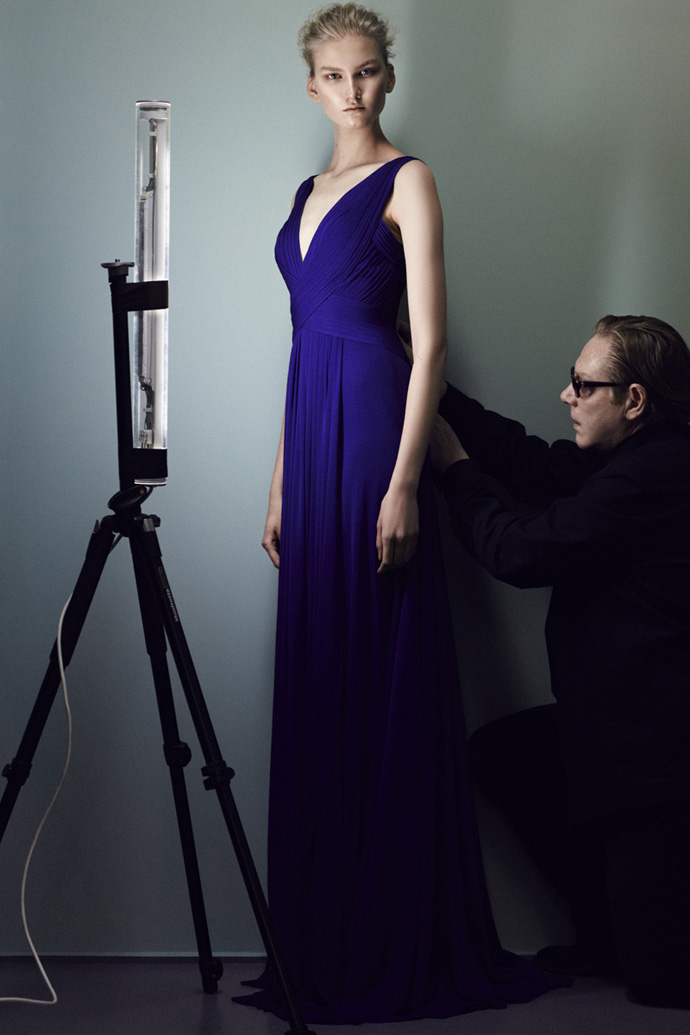
Mr.HL: When I was “Hervé Léger” I was never satisfied. Nothing was good enough and I always thought I could do better. Today, although I still want to do better I become emotional by looking at my own dresses, a feeling I never had before.
I am happier today because I don’t have anybody else involved in my business; I have a great team of loyal people working with me. Also what is very emotional for me is when I see women trying my clothes on.F.M: What is next for you?
Mr.HL: I’m working on developing my business. A perfume that I am working on. I want to start doing accessories, shoes, lingerie and swimsuits. Also my customers locked me in my atelier designing dresses – at least I am famous for something (laughs)- but you know I am very good in designing suits, coats, pants and blouses…Basically when you are wearing Herve L.Leroux, is for the evening. I want to make day-wear too. Although every time I do they never buy it, but I’m going to push.
The interview is a collaboration project between Un nouVeau iDEAL and The Stimuleye.
interview FILEP MOTWARY
photography RENE HABERMACHER
fashion editor SUZANNE VON AICHINGER
hair PANOS PAPANDRIANOS
make up YIANNIS SISKOS
model ANNA MARTYNOVA@ NEXT MODELSthank you VERSAE VANNI @ NEXT PARIS
-

SIREN SUZANNE von AICHINGER
-Suzanne von Aichinger is a modern archetype of the Parisian muse, in spite of the fact that she was born in Germany, and grew up in Canada.
She was discovered by the legendary illustrator Antonio Lopez, whom she considers to be one of the great influences in her life, as well as a very close friend. She inspired and collaborated closely in the design studios, with Christian Lacroix, John Galliano and Jean Paul Gaultier. Suzanne von Aichinger posed for iconic photographers Serge Lutens, Paolo Roversi, Mario Testino, Jean Loup Sieff, Ali Madhavi, David Seidner, and strutted down the catwalks of Yves St Laurent, Thierry Mugler, Claude Montana, Gianni Versace, Christian Dior (Galliano) , Hermes, Martin Margiela, John Galliano, Jean Paul Gaultier.
In Greek mythology, the Sirens with the irresistible charm of their song, lured mariners to their destruction on the rocks surrounding their island..
In modern mythology, Sirens are dressed in Rick Owens, pose for photographer René Habermacher and share their secrets and thoughts on current and past affairs with Stimuleye Filep Motwary…
SUZANNE VON AICHINGER feature, is a collaboration between Un nouVeau iDEAL and THE STIMULEYE Fashion Editor : Ines Fendri ⎜ Make Up : Akiko Sakamoto ⎜ Hair : Karin Bigler Production : Lynsey Peisinger for THE STIMULEYE Special Thanks to Mr Rick Owens and Anne van den Bosche @ Rick Owens Press Office
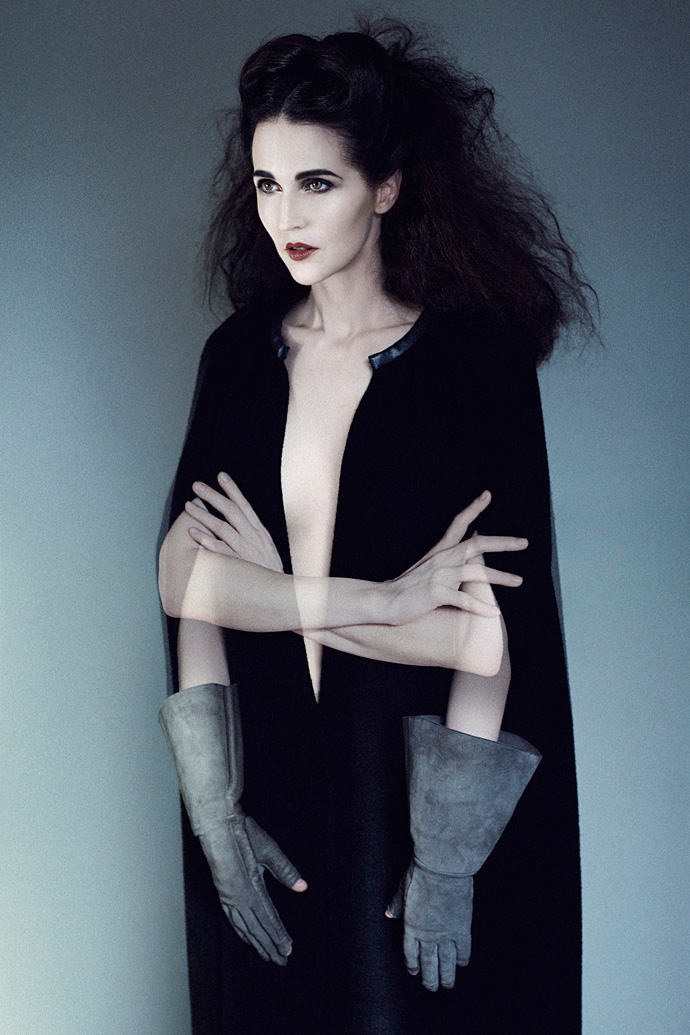 KALI, Suzanne von Aichinger wears a Rick Owens cape and gloves, all FW2011. Photography by René Habermacher
KALI, Suzanne von Aichinger wears a Rick Owens cape and gloves, all FW2011. Photography by René HabermacherI always liked her and when we finally became friends, I liked her even more. In the following conversation Suzanne shares her thoughts on fashion, music, talent, the water, mythology and other obscurities. You are about to discover the muse, the model, the artist, the stylist..
I caught her leg on her daybreak between styling for a Vogue photo shoot and organizing a major project.
FILEP MOTWARY: Hi beautiful? So it was very difficult to catch you in the past two months. What have you been up to?
SUZANNE von AICHINGER: I know Filep. I’ve been a little like Houdini…escaping. But for a good reason. I had plenty of work and styling projects
Tell me more about it please. It seems you work non-stop.
It’s been good for me lately. I’ve been styling some perfume campaigns, editorials for Russian Vogue, Italian Vanity Fair, doing photos with Dita, and now I’m preparing another perfume campaign, and a major photo shoot with one of the MOST gorgeous women on the planet.
Oh Gosh, indeed its a lot. You mean the actress, Elisa Sednaoui? Ali posted a shot of her on twitter…
Oh what a beauty Elisa is!!! But, I’m referring to another lady…very iconic. I don’t know if I should say who it is. I don’t like to talk about things before they come out…
I understand. How easy it is for you to collaborate with people. What a concept needs to have in order to get you involved in it?
Collaborating with people is my ultimate way of creating. I find the dynamic of working with another or others, stimulating, and proven a successful way of expression for me.
How do you make your choices? Is money an important motive or not always?
There has to be an element that compels me, something that excites my imagination. I also have to feel that I have something relevant to bring to the story. Money is very often not a motive. But, sometimes it is an essential part of creation. We must also live, make a living, etc. You have to know when to give and when to sell!! There is no shame in being paid for a job well done. Andy Warhol considered making money the highest art form. I’m not sure that I adhere to this philosophy, but I don’t love being broke either. I like the freedom that having some cash on hand can procure you.
On the other hand there might be talented people, who would love your contribution but, lets say, cannot afford you. How would you react in such conditions?
I usually say YES to a project, which stimulates me. It’s not about the $$$. It’s about the action. I believe in working with people that I consider talented or kindred spirits. As people of great talent have wanted to work with me, when I had no money to pay them. Just for the sheer joy of seeing an idea become a reality.
I wanted to ask you about the photo shoot you just did with René Habermacher. It’s so iconic, yet in a very special way. How was working with René?
I loved it. We had a beautiful day together, with a great creative team. We wanted to express in this series, something that is based more on personality, than fashion. I feel that there are many stories to be told in my future with René. There is a quality in his vision that is very strong and appealing.
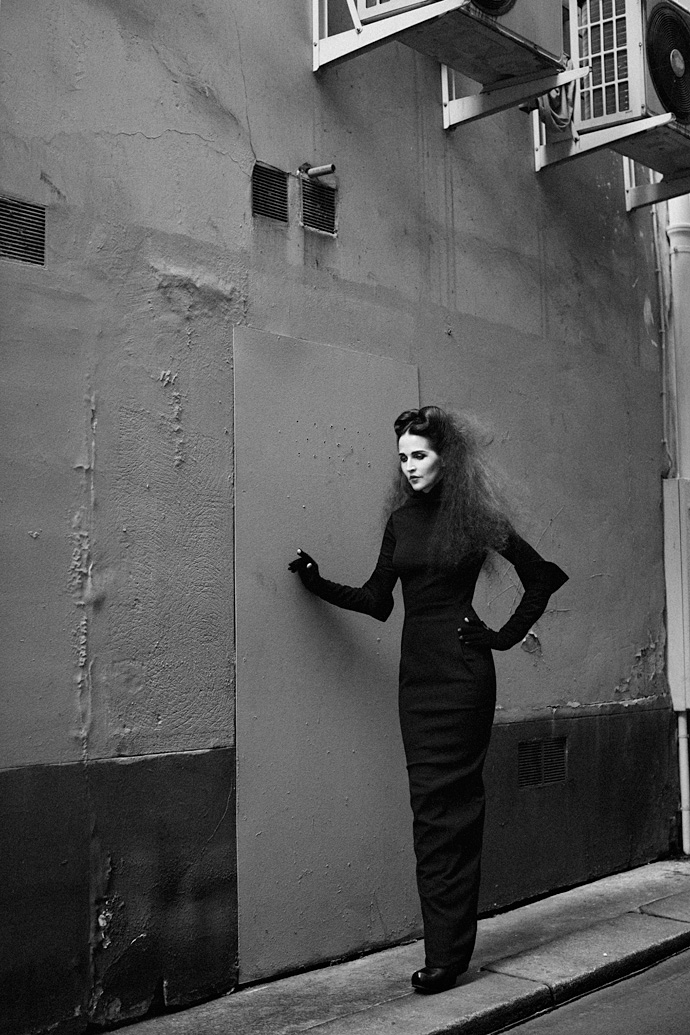 CASSANDRA, Suzanne von Aichinger wears a Rick Owens dress, boots and gloves, all FW2011.
Photography by René Habermacher
CASSANDRA, Suzanne von Aichinger wears a Rick Owens dress, boots and gloves, all FW2011.
Photography by René HabermacherExactly my point. The photographs serve our conversation so right! I’m very happy that Rick Owens was so positive when I contacted him for the garments. He is always so nice to me. Also for the fact that we shot his winter collection which is by far my favorite!
So am I! I LOVE Rick! He is one of my favorites. And, his fashion is timeless. I know that this can sound cliché, but if you have some pieces by Rick from 12 years ago, they are as relevant as pieces that he has made 2 days ago. They don’t go in and out of fashion. They have their own essence and place.
Having in mind that Rick’s clothes are so special, yet the 2000’s are the epitome of diversity. Each designer points out a different outline every season, there is so much choice. How do you see fashion now yourself, as a stylist?
It’s hard for me to answer this. I see many great things happening, no doubt. But, I see a lot of nonsense going on as well. There is not enough power any more in the hands of the creators. Now, big design houses change designers like they change their underwear. Just ridiculous. There is no time for the designer in place to create a brand identity, that he is fired. And very often, they find out that they’ve been fired, by reading about it in the papers.
It’s as if the financial/commercial people at the heads of some houses, envied the position of creator, and wished to usurp it. They believe that they are capable of being the creator. WRONG!!!!
(more…)
